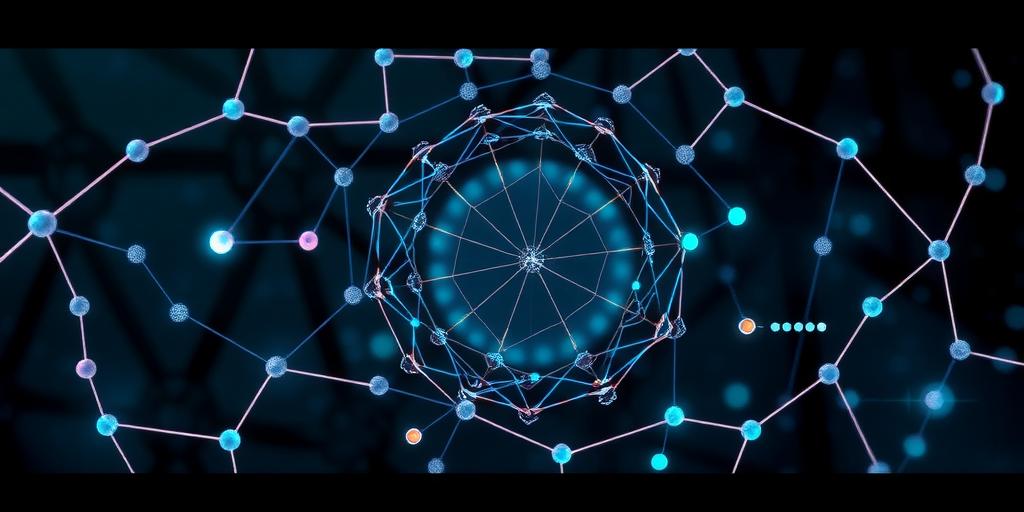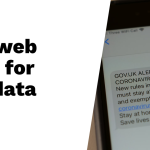The dark web is an intriguing part of the internet that requires specific tools, like Tor or I2P, to access. While often associated with illegal activities, it also serves vital purposes for those seeking privacy, such as journalists and activists. This beginner’s guide emphasizes the importance of monitoring the dark web to safeguard organizational data against threats like credential leaks or discussions about cyber-attacks. Using tailored monitoring tools can help detect sensitive information potentially linked to a business. Organizations should prioritize continuous monitoring and develop clear incident response protocols while also addressing privacy and legal concerns related to their activities online.
Table of Contents
- Understanding the Dark Web
- Purpose and Uses of the Dark Web
- Importance of Dark Web Monitoring
- Tools for Dark Web Monitoring
- Techniques for Effective Monitoring
- Best Practices for Organizations
- Ethical Considerations in Monitoring
- Future Trends in Dark Web Intelligence
- Frequently Asked Questions
1. Understanding the Dark Web

The dark web is a unique part of the internet that is not indexed by standard search engines, making it difficult for the average person to access. It represents a small segment of the deep web, which encompasses all online content that search engines do not index. One of the key features of the dark web is the anonymity it provides, allowing users to communicate and share information without fear of surveillance or censorship. This anonymity, while appealing, has also led to the growth of criminal enterprises that take advantage of the reduced risk of detection. To access the dark web, users typically rely on specific tools such as Tor, which routes internet traffic through a network of volunteer relays to conceal users’ locations and usage. Websites on the dark web often utilize .onion domains, requiring users to have the Tor browser installed. Although the dark web is frequently associated with illegal activities like drug trafficking and the sale of stolen data, it also serves legitimate purposes. For instance, it hosts forums, marketplaces, and privacy-focused communication tools that are essential for journalists, activists, and individuals living under oppressive regimes. Moreover, the dark web can act as a safe haven for whistleblowers wishing to disclose sensitive information securely. However, exploring this hidden part of the internet requires caution, as it can expose users to risks such as malware and scams.
2. Purpose and Uses of the Dark Web
The dark web serves various purposes, both legitimate and illegitimate. Journalists use it to communicate securely with sources, ensuring their interactions remain private and untraceable. This is particularly vital in regions where press freedom is restricted. Activists in oppressive regimes also rely on the dark web to organize and share information without government surveillance, allowing them to mobilize for change safely. On the other hand, some individuals seek refuge from corporate surveillance and data mining by accessing dark web platforms.
However, the dark web is not without its dark side. Criminals exploit it for illegal transactions, ranging from drug sales to the distribution of stolen data. Cybercriminals find a haven here; they share hacking tools and techniques, making it easier for newcomers to engage in illegal activities. Political dissenters may also use the dark web to express their views without the fear of retribution.
Researchers and security professionals may explore the dark web to study criminal behavior and the evolution of cyber threats, gaining insights that can inform their defenses. Some users turn to the dark web to seek information on data breaches or compromised accounts, while others engage in alternative online communities that prioritize freedom of speech and privacy. Additionally, certain dark web marketplaces offer digital goods, such as specialized software or tutorials, that may not be available on the surface web.
3. Importance of Dark Web Monitoring
Dark web monitoring is essential for organizations aiming to safeguard their sensitive data. By keeping an eye on potential threats, businesses can identify compromised credentials before they lead to more significant issues. For instance, if an organization discovers that employee email addresses and passwords are being sold on dark web forums, they can act quickly to reset those accounts and prevent unauthorized access.
Moreover, dark web monitoring can reveal discussions about planned attacks against specific organizations or individuals. This insight allows companies to bolster their defenses or adjust their security strategies in response to emerging threats. By analyzing what cybercriminals are discussing, organizations can gauge the effectiveness of their current cybersecurity measures and identify any gaps that need addressing.
Understanding the threat landscape specific to an industry is another critical benefit of monitoring the dark web. Organizations can track trends and patterns that may target their sector, allowing them to stay one step ahead of potential exploits. Early detection of data leaks is vital, as it can prevent further exploitation of sensitive information by malicious actors.
Additionally, monitoring services can uncover whether sensitive data has been shared or sold on dark web forums, providing organizations with the information needed to contain a potential breach. The threat intelligence derived from these findings can inform and enhance security strategies, enabling organizations to prepare more effectively for potential attacks.
Finally, a proactive approach to dark web monitoring can significantly improve an organization’s reputation. By demonstrating a commitment to cybersecurity, businesses can build trust with customers and stakeholders, showing that they take data protection seriously.
4. Tools for Dark Web Monitoring
Various tools are available for dark web monitoring, enabling organizations to track mentions of their brand or sensitive information. These monitoring tools often provide automated scanning capabilities, which can save time and resources by continuously searching the dark web for relevant data. Some tools send alerts when sensitive information is discovered, allowing organizations to act swiftly to mitigate potential threats.
Additionally, certain dark web monitoring services focus on specific industries, offering tailored insights that can be more relevant to the unique risks those sectors face. Organizations can choose from subscription-based services, which can be budget-friendly for ongoing monitoring, or opt for custom solutions that suit their specific needs.
Data aggregation tools compile findings from various dark web sources, providing a comprehensive analysis that helps organizations understand trends and patterns in dark web activities. Some advanced tools utilize AI technology to identify these patterns, enhancing the monitoring process and providing deeper insights into potential threats.
For those with limited budgets, open source tools are also available, offering a starting point for organizations to begin their monitoring efforts without significant upfront costs. Working with cybersecurity firms can further enhance monitoring capabilities, as these firms often share valuable intelligence that can improve an organization’s overall security posture.
Regular updates in monitoring tools ensure that they remain effective as the dark web landscape evolves. Many solutions feature user-friendly dashboards that help organizations visualize data and track changes in dark web activity over time, making it easier to respond to emerging threats.
| Tool Name | Description | Key Features | Suitable For |
|---|---|---|---|
| Tor | A privacy-focused network that enables anonymous communication. | – Routes traffic through volunteer relays – Opens .onion websites |
Individuals and journalists seeking anonymity |
| ZeroNet | Decentralized platform that supports websites without needing a central server. | – Uses Bitcoin for hosting – Censorship-resistant |
Developers and privacy advocates |
| I2P | Allows secure, encrypted peer-to-peer communication. | – Focuses on privacy – Supports various applications |
Activists and privacy-conscious users |
| Freenet | A peer-to-peer platform for censorship-resistant sharing. | – Data is stored in a distributed manner – Services can be hosted anonymously |
Whistleblowers and free speech advocates |
| OSINT Tools | Collect and analyze information from publicly available sources. | – Gathers data open to the public – Allows for broad monitoring |
General cybersecurity professionals |
| DARKInt Tools | Specialize in gathering intelligence from the dark web. | – Focuses on hidden information – Provides insights on illegal activities |
Organizations needing specific dark web intelligence |
5. Techniques for Effective Monitoring
Establishing clear objectives for monitoring is essential. This allows organizations to focus their efforts on the most relevant threats. For instance, if an organization is concerned about data breaches, monitoring for keywords related to stolen credentials can prove effective. Setting up alerts can further enhance this process, ensuring that any new findings on the dark web are communicated promptly to the relevant teams.
In addition to keyword searches, incorporating social media monitoring can provide valuable insights into discussions that might lead to dark web activities. For example, if there is a surge in conversations about a particular vulnerability, it may indicate an upcoming threat that warrants attention. Regularly analyzing collected data helps identify trends and emerging threats, allowing organizations to stay one step ahead.
Utilizing threat modeling is another effective technique. By prioritizing risks, organizations can allocate resources more efficiently, addressing the most pressing threats first. Engaging in community forums can also offer insights into potential vulnerabilities and threats that may not be widely known. Collaboration with law enforcement and cybersecurity experts can further enhance monitoring practices, bringing in additional expertise and resources.
Training staff to recognize signs of potential threats based on dark web findings is crucial. Employees should be aware of the risks associated with the dark web and how to respond if they encounter suspicious activity. Finally, regularly reviewing and adjusting monitoring strategies ensures that they remain effective against the evolving landscape of threats.
- Establish clear objectives for monitoring activities to focus efforts on relevant threats.
- Utilize keyword searches to identify specific threats or mentions related to the organization.
- Set up alerts to receive notifications about new findings on the dark web promptly.
- Incorporate social media monitoring to track discussions that may lead to dark web activities.
- Regularly analyze the data collected to identify trends and emerging threats.
- Use threat modeling to prioritize risks and allocate resources effectively.
- Engage in community forums to gain insights into potential vulnerabilities and threats.
- Collaborate with law enforcement and cybersecurity experts to enhance monitoring practices.
- Train staff to identify signs of potential threats based on dark web findings.
- Review and adjust monitoring strategies regularly to ensure they remain effective against evolving threats.
6. Best Practices for Organizations
Organizations should start by developing a comprehensive dark web monitoring strategy. This strategy should include regular assessments and updates to keep pace with the ever-evolving landscape of threats. It is crucial to create incident response plans that outline the steps to take when sensitive information is discovered on the dark web. These plans should be clear and actionable, ensuring a swift response to mitigate potential damage.
Fostering a culture of cybersecurity awareness among employees can significantly reduce risks associated with the dark web. Regular training sessions can help staff recognize threats and understand safe online behaviors. Additionally, using analytics to track the effectiveness of monitoring efforts allows organizations to adjust their strategies based on real-time data.
Engaging with third-party experts can provide valuable insights and guidance on best practices in dark web monitoring. Documenting all findings and actions taken in response to alerts is essential for future reference and learning. Establishing partnerships with cybersecurity firms enhances monitoring capabilities and facilitates threat intelligence sharing.
Encouraging open communication about potential risks and security concerns within the organization is also vital. Regularly reviewing and testing incident response plans ensures they are effective in real-world scenarios, preparing the organization for any challenges that may arise.
7. Ethical Considerations in Monitoring
Organizations must tread carefully when it comes to monitoring activities on the dark web. There is a delicate balance between enhancing security and respecting the privacy rights of individuals. To stay on the right side of this line, monitoring practices should adhere to all relevant laws and regulations concerning data privacy. Transparency in these practices can foster trust among customers and stakeholders, reassuring them that their rights are considered.
Moreover, organizations need to think about the potential impacts of their monitoring efforts on individuals involved. Establishing ethical guidelines for dark web monitoring can help ensure that data is collected responsibly and not exploited for harmful purposes. Protecting the identities of those associated with dark web activities is crucial, as misuse of this information can lead to significant harm.
Collaboration with legal experts is advisable to navigate the complex landscape of ethical monitoring. Continuous evaluation of monitoring practices is also essential, ensuring alignment with ethical standards and societal norms. Engaging with advocacy groups can offer diverse insights into privacy and ethical considerations, enriching the organization’s approach to monitoring.
8. Future Trends in Dark Web Intelligence
The landscape of dark web intelligence is rapidly evolving, influenced by various technological and societal trends. One significant factor is the rise of artificial intelligence, which is expected to enhance monitoring tools, making them more sophisticated in identifying threats and anomalies. As encryption technologies advance, accessing and monitoring dark web activities will likely become more complex, posing challenges for organizations.
Increased collaboration between businesses and law enforcement agencies could strengthen dark web intelligence efforts, enabling more effective responses to cyber threats. However, the emergence of decentralized marketplaces on the dark web may complicate these monitoring efforts, as these platforms can be harder to track and infiltrate.
As cybercriminals adapt their tactics, organizations must also evolve their monitoring strategies to keep pace with new cybersecurity threats. The growing demand for privacy and anonymity will influence the development of new dark web services, catering to users’ needs while posing potential risks.
Emerging technologies like blockchain could provide innovative ways to secure transactions on the dark web, making them more traceable and transparent. Additionally, the shift toward remote work means organizations need to enhance their monitoring of personal devices that may access the dark web, ensuring they are not exposed to hidden risks.
The intersection of social media and the dark web may yield valuable insights into emerging threats, as discussions around illicit activities can spill over into these platforms. Finally, as awareness and education about the dark web increase, organizations will need to adjust their approaches to monitoring, ensuring they stay informed about the latest trends and developments.
Frequently Asked Questions
1. What is the dark web and why is it important for intelligence and monitoring?
The dark web is a part of the internet that isn’t indexed by standard search engines. It’s significant for intelligence and monitoring because it can host illegal activities, data breaches, and other hidden information that could impact security and privacy.
2. How can I start monitoring the dark web for potential threats?
To begin monitoring the dark web, you should use specialized tools and services designed for dark web intelligence. These tools can help you track leaked data, detect threats, and gather insights from the dark web safely.
3. What types of information can be found on the dark web that concerns businesses?
Businesses can find leaked credentials, discussions about potential breaches, threats against the company, and even data sold illegally. This information can help in identifying vulnerabilities and enhancing security measures.
4. Is it safe to access the dark web for monitoring purposes?
Accessing the dark web can be risky due to potential exposure to illegal activities and cyber threats. It’s best to use secure methods, like VPNs and trusted tools, to keep your information safe while monitoring.
5. How do I know if the information I find on the dark web is accurate?
Verification can be tough, but cross-referencing information with other reliable sources or using established monitoring tools can help determine accuracy. Being cautious is key, as misinformation can also be present.
TL;DR This beginner’s guide outlines dark web intelligence and monitoring, explaining the dark web’s definition and access methods. It covers the purpose and uses of the dark web, both legitimate and illicit, emphasizing the importance of monitoring for risk mitigation and threat intelligence. The guide highlights various tools and techniques for effective monitoring, as well as best practices for organizations, including continuous monitoring and employee training. Lastly, it addresses ethical considerations like privacy and legal compliance, emphasizing the value of a comprehensive cybersecurity strategy.





